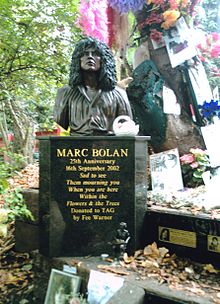Several years ago, I commissioned a writer at Time Out to go and explore what we then described as one of occultist and writer Aleister Crowley’s few remaining London homes – an apartment at 73 Chancery Lane, that was about to be turned into offices. In these rooms, Crowley had set up a temple for his magical friends, the Order of the Golden Dawn, and our writer made a valiant attempt at conjuring up a spooky atmosphere from what was probably a rather forgettable set of empty rooms. He even quoted a builder working on the site who claimed to have discovered a human skull and pentangle formed from sticks.

This seemed an entertaining and fairly useful thing to do because even though London is replete with memorials and blue plaques to long-forgotten politicians and music hall artists, there are no blue plaques for Aleister Crowley. London has a plaque for the dog that inspired the HMV logo, but even today, the one-time “wickedest man alive” is beyond the pale for the heritage industry despite his decent literary output and outsized influence on popular culture. (I have written about one such story here.)

Phil Baker’s fabulous new book, City Of The Beast, corrects that oversight. This is a biography of Crowley told through London locations – 93 in all, a number with magical significance for Crowley’s Thelamic religion. Baker, whose biography of artist and occultist Austin Osman Spare is a minor classic, began the book as a lockdown project, listing London places associated with Crowley as something to do to pass the time and stop worrying about the end of the world. He’d soon listed dozens of Crowley homes thanks to Crowley’s inability to settle anywhere for long. That residence at Chancery Lane is mentioned, along with numerous apartments around Piccadilly plus others in Chelsea and Fitzrovia. At times, Crowley resided in such unlikely spots as Streatham, Surbiton, Richmond and Paddington, sometimes living for only weeks, fleeing in advance of creditors as his circumstances declined. It’s likely that most of us will have walked past one or two of Crowley’s front doors and certainly visited the same shops or drank in the same pubs. London overlaps – that’s one of the reason we like blue plaques. As Baker notes at one point, Caxton Hall in Westminster, the site of a public performance of a Crowley rite in 1910, was also the location of “Churchill’s election speech; the assassination of Sr Michael O’Dwyer in revenge for the Amritsar Massacre; the founding of the National Front; and the wedding of Ringo Starr”.

This is more social history than psychogeography, thank goodness. Drawing from Crowley’s unpublished personal diaries, Baker presents Crowley’s rather sad progression through homes and temples as well as the museum, shops, restaurants, printers and courtrooms of Edwardian London. We follow Crowley’s dramatic, even thrilling rise and then a rather pathetic long decline, a petering out, as he hops, heroin-addicted, from home to home, desperately trying to maintain his image and reputation. That must have been awful for a man who once supped with giants – Augustus John, Anthony Powell, WB Yeats, Nina Hamnett, W Somerset Maugham, Auguste Rodin – and in the diaries, some of the frustration comes through. We also get to meet many other remarkable figures who are now largely forgotten such as Labour MP and Crowleyite Tom Diberg, Allen Bennett, who lived with Crowley at Chancery Lane and later became a leading proponent of Buddhism in England, and composer and occultist Peter Warlock, father of the great art critic Brian Sewell. A typical entry will introduce a character like JFC Fuller, a successful soldier who loved yoga the occultism and fascism, becoming one of only two Englishmen invited to Hitler’s 50th birthday parade.
Crowley’s magical and philosophical beliefs are explored in outline, as are his literary achievements, his impressive sexual exploits (these were carefully recorded as Crowley practised sex-magic) and, rather wonderfully, his recipes. Crowley loved to cook and enjoyed strong flavours: a Crowley recipe book could surely be created for the niche occult-gastronomic market, although it would take a brave soul to sample some of these recreations.
Baker presents Crowley as a man whose outlook was formed in the decadent 1890s, one who never really adapted to the changing world, his own age or the reduced circumstances that meant a gentleman without money could no longer shop at Fortnums and live on Jermyn Street and would, instead, have to spend some time in a bedsit near Praed Street drinking at the Royal Oak. He quotes Cyril Connolly’s observation that Crowley bridged “the gap between Oscar Wilde and Hitler”, and that’s a neat way of looking at Crowley both in terms of the age he occupied and the principles and philosophy he espoused. That makes this a very rewarding social history – a look at London in the first decades of the 20th century, still clinging to the veneer of Victoria, like Jeeves And Wooster with magic.
It’s ultimately a very human study of the man, stripping him of much of his mystic allure without making him seem ridiculous, which could easily be the case when dealing with figure who did as many ridiculous things as Crowley. It’s hard not to see Crowley as analogous to those pop stars of the 1960s who worshipped Crowley’s libertarianism and whiff of stage-conscious evil who are still living a priapic life with full heads of hair, clinging to those glory days. And frankly, who can blame them?
City Of The Beast by Phil Baker (Strange Attractor).















































